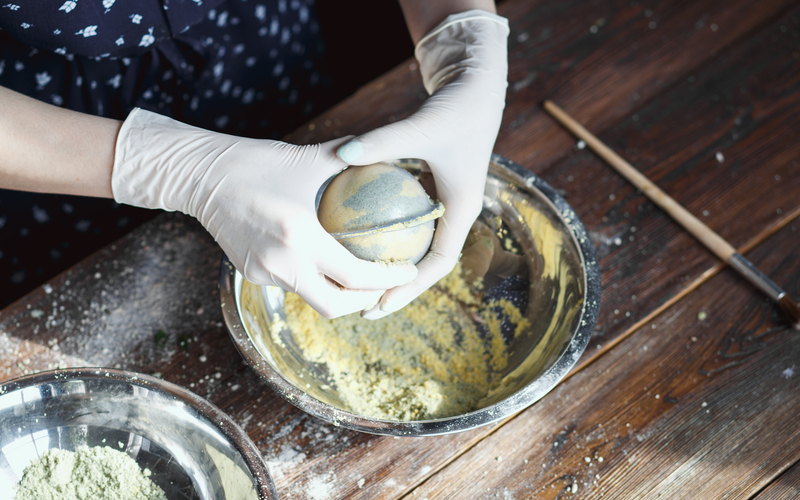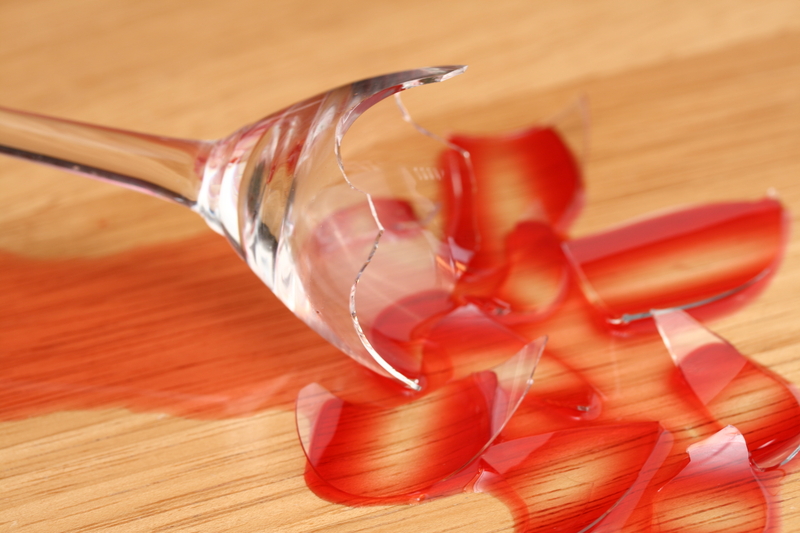Keep Your Velvet Curtains Fresh and Luxurious: Here's How
Posted on 04/06/2025
Keep Your Velvet Curtains Fresh and Luxurious: Here's How
Velvet curtains epitomize elegance, transforming any room into a haven of sophistication and comfort. However, their plush texture and luxurious appeal also make them prone to collecting dust, pet hair, and stains more than other fabrics. To preserve their rich color and sumptuous feel, it's vital to treat velvet with care and adopt a dedicated cleaning routine. In this comprehensive guide, you'll learn everything you need to know to keep your velvet curtains fresh, vibrant, and opulent for years to come.
Why Velvet Curtains Require Special Attention
Unlike cotton or polyester, velvet curtains are made with a dense pile, which is what gives velvet its signature softness and sheen. However, this same texture makes the fabric more sensitive to dust, moisture, and friction. Regular cleaning requirements are different for velvet than other curtain materials, and using the wrong methods can crush or damage the delicate pile, causing permanent changes in appearance. Understanding the nature of velvet is the first step to maintaining your luxury window treatments in pristine condition.
Main Benefits of Keeping Velvet Curtains Clean
- Prolonged Lifespan: Regular upkeep ensures that your investment remains beautiful and functional for years.
- Healthier Indoor Environment: Properly cleaned velvet curtains can help reduce allergens and improve overall air quality indoors.
- Brighter, Glossier Finish: Clean velvet maintains its sheen, making your interiors appear brighter and more inviting.

Understanding the Types of Velvet Used in Curtains
Knowing what kind of velvet your curtains are made from will guide your cleaning and care practices. Different velvet types respond uniquely to moisture and cleaning agents. Here's a quick breakdown:
- Silk Velvet: The most luxurious and delicate, best handled with professional cleaning.
- Cotton Velvet: More durable than silk, but can still crush easily.
- Synthetic Velvet (e.g., polyester, microfiber): Offers more durability and resilience, often suitable for gentle hand or machine washing.
- Crushed Velvet: Characterized by its distinct texture, which is less prone to crushing but can still attract dust.
Routine Care: Keep Your Velvet Curtains Fresh All Year Round
Routine maintenance will ensure your velvet curtains always look their best. Here are easy, practical steps you can weave into your cleaning schedule:
1. Weekly Dusting
- Use a Soft-Bristled Brush or Lint Roller: Gently brush your curtains to remove surface dust or use a lint roller to capture particles and pet hair.
- Vacuum with an Upholstery Attachment: Set your vacuum on low suction and glide the upholstery brush downward along the pile to avoid crushing the velvet fibers.
Tip: Always brush or vacuum in the direction of the velvet pile--never against it, as this can flatten the nap and dull the surface.
2. Protecting Velvet from Sunlight and Moisture
Direct sunlight can fade velvet curtains over time, while excessive humidity can cause mildew. Take these steps:
- Hang Away from Damp Areas: Avoid placing velvet curtains in kitchens or bathrooms where moisture is prevalent.
- Use Sheer Linings: Install a sheer curtain behind your velvet drapes to filter sunlight and protect the fabric.
- Rotate Curtains: Change the positions of your curtains every season to minimize uneven sun exposure.
3. Spot Cleaning Spills and Stains Immediately
The key to stain removal is speed. Here's how to address accidents:
- Blot, Don't Rub: If a spill occurs, blot gently with a clean, dry cloth to absorb as much liquid as possible.
- Use a Damp Cloth: For stubborn spots, dampen a soft, white cloth with water and gently press onto the stain. Avoid oversaturating the fabric.
- Avoid Harsh Cleaners: Do not use ammonia, bleach, or rough sponges. These can damage the velvet's texture and color.
Test any cleaner -- even water -- in an invisible area first before working on the main stain.
Deep Cleaning: How to Refresh Velvet Curtains Without Damaging Them
Routine care is sometimes not enough, especially if your velvet curtains have absorbed odors or have visible dirt. Here are your best options for deeper cleaning:
1. Professional Dry Cleaning
- Recommended for Most Velvet Curtains: Especially silk and cotton velvet. The specialized solvents and gentle handling help prevent pile crushing.
- Look for Experts in Handling Delicates: Be sure to choose a dry cleaner experienced with luxury fabrics.
2. Gentle Hand Washing (For Some Synthetic Velvets)
- Check Manufacturer's Label: Only proceed if the label specifically says the fabric is washable.
- Hand Wash in Cold Water with Mild Detergent: Gently agitate the curtain in water and avoid wringing or twisting.
- Rinse Thoroughly and gently press out excess water by rolling the curtain in a clean towel.
- Hang to Air Dry: Lay the curtain flat or hang it up so the weight of the fabric smooths out wrinkles naturally.
3. Steam Cleaning Velvet Curtains
- Suitable for Synthetic and Heavier Cotton Velvets: Always perform a spot test first!
- Use a Handheld Steamer: Hold the steamer a few inches away from the fabric and move downward with the pile to refresh and deodorize the curtains without soaking them.
Note: Always avoid saturating velvet with water or allowing steam to collect in one area.
Tips for Maintaining a Luxurious Look
To maintain that freshly hung, upscale appearance, go beyond just cleaning. Here are some expert-approved best practices:
Avoid Crushing the Pile
- When opening and closing your curtains, avoid bunching them up into tight knots or holding them tightly with bands that may flatten the pile.
- Use wide, fabric curtain tiebacks instead of thin cords to reduce pressure marks on the velvet.
Grooming Your Velvet Curtains
- After cleaning or steaming, gently brush the nap in one direction with a soft cloth or velvet brush to restore the lush appearance.
- If pressure marks or minor creases appear, a light pass with a steamer while brushing can revive the fabric's natural loft.
Prevent Color Fading
- Keep velvet curtains out of prolonged direct sun: Even with linings, try to close the drapes or adjust blinds during the brightest hours of the day.
- Rotate curtain panels occasionally so fading (if it occurs) happens evenly and is less noticeable.
Control Odors Naturally
- Allow curtains to hang freely with windows open on dry days, letting fresh air circulate and banish trapped smells.
- For persistent odors, lightly mist with a mixture of 50/50 water and white vinegar and allow to dry. Always spot test first.
Common Mistakes to Avoid With Velvet Curtain Care
Even the best intentions can lead to missteps. Here are mistakes to steer clear of:
- Over-washing: Frequent wet cleaning can break down the pile, making velvet look worn.
- Using Heat: Ironing directly on velvet causes the pile to flatten or even melt, leading to permanent damage.
- Ignoring Stains: Allowing stains to set makes them much harder to remove later.
- Improper Storage: Folding or storing velvet in cramped conditions can introduce creases and flatten the nap.
Storing Velvet Curtains Properly
If you need to put your velvet curtains away for a season, take care to do it right:
- Make sure curtains are completely clean and dry before storing to prevent mold or mildew.
- Store curtains rolled, not folded, around an acid-free tube if possible to minimize creasing and pile damage.
- Wrap in a breathable cotton sheet or muslin rather than plastic, which can trap moisture and lead to mildew.
- Keep in a cool, dry, and dark location away from direct sunlight and humidity.
Troubleshooting: Reviving Old or Neglected Velvet Curtains
Inherited vintage velvet curtains, or perhaps neglected your drapes for a bit too long? Here's how to bring back the glam:
- Shake Out Dust: Take curtains outside and give them a vigorous shake to dislodge embedded dust.
- Brush and Steam: Thoroughly brush with a velvet-specific brush, then steam lightly to lift the nap.
- Spot Treat Stains: Use gentle, diluted detergent on problem areas, following the routine for spot cleaning as above.
- Consider a Professional Restoration: For heavily soiled or fragile vintage velvet, specialized cleaning services can often work miracles.

Frequently Asked Questions: Velvet Curtain Care
Can I Machine Wash Velvet Curtains?
Most natural velvets (like silk or cotton) should not be machine washed because agitation can damage the pile. Some synthetic velvets may be machine washable on a delicate cycle in a laundry bag--always check the care label first.
Should I Iron Velvet Curtains?
No, avoid direct ironing. Heat and pressure will flatten the plush texture. Smooth out wrinkles and creases with gentle steaming instead.
Is Steaming Safe for All Velvet Types?
While steaming is usually safe for synthetic and heavier velvets, always spot test on a hidden corner first. Very delicate or vintage velvets may be damaged by steam, so use extra caution.
How Often Should Velvet Curtains Be Cleaned?
Light dusting and vacuuming should be done weekly or bi-weekly. Deep cleaning is typically needed only annually, depending on traffic and environmental factors in your home.
How Can I Bring Back the Shine in Dull Velvet Curtains?
- Use a gentle brush in the direction of the nap with a touch of steam to revive the sheen.
- For extreme dullness, consult a professional as they can sometimes recondition the pile to restore luster.
Conclusion: Elevate Your Space by Keeping Velvet Curtains Fresh
Velvet curtains are a statement of style and comfort, and keeping them fresh and luxurious is easier with a little knowledge and routine TLC. From regular dusting and gentle spot cleaning to professional care for more stubborn dirt and odors, you can preserve the beauty and elegance of your velvet window treatments for years. By following these expert-backed practices, you'll protect your investment and keep your home looking instantly more inviting, elegant, and opulent every day.
Embrace these tips, and your velvet curtains will always impress, shimmering with a regal allure that never goes out of style!






